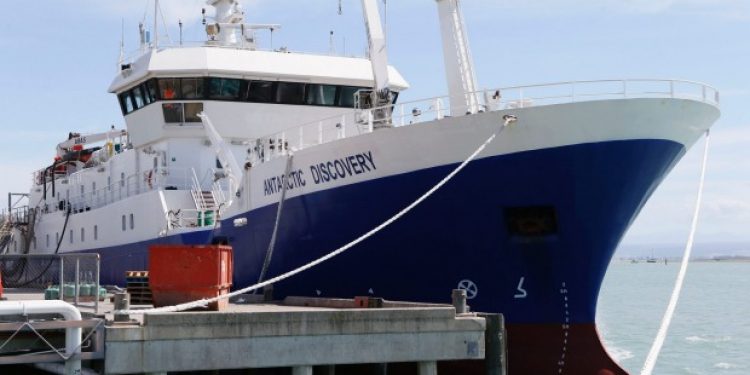Sealord has added to its Ross Sea toothfish capacity with an Australian-flagged, 57 metre, Norwegian-built longliner that has been undergoing a refit at Port Nelson.
Antarctic Discovery joins Antarctic Chieftain under the banner of Australian Longline, 50-50 venture between New Zealand’s Sealord Group and Japanese company Nissui. Sealord is in turn owned jointly by Nissui and New Zealand’s collective iwi, who received the share in the company as part of the Maori Fisheries Settlement.
Antarctic Discovery is ‘a better ice-class boat’ than the Antarctic Chieftain, according to Sealord fishing general manager Doug Paulin. Both will target toothfish but the Antarctic Chieftain, which has twice suffered propeller damage in the Ross Sea and was trapped for five days last year, would be used on other less ice-prone fishing grounds, he said.
Australian Longline chief executive and former Nelson-based skipper Malcolm McNeill, now based in Hobart, said the Antarctic Discovery’s hull design meant that it was less prone to the propeller damage suffered by the Antarctic Chieftain in the past two seasons.
He added that Antarctic Discovery was built in 1995 as a toothfish vessel and until recently was one of the biggest boats of its kind in the world. It had fished out of Argentina for some years, with his company acquiring it from a Norwegian toothfish company a short time ago.
It is likely not be seen in Nelson again until late November when it arrives to gear up for the annual Ross Sea olympic fishery, when vessels from approved nations fish until the overall agreed quota has been caught, although he commented that if the first trip shows that significant work needed to be done on the new ship, it would come back to Nelson in late March.
‘It’s not just the ice conditions, it’s the fact that it’s a competitive fishery in ice conditions. Often the limits are pushed harder than you would normally do if you’re just down there with your own quota.’
Antarctic Discovery will carry 24 crew plus two observers and as this sort of fishing is newer to Australia, many of the senior positions on the boats were filled by New Zealanders.
Sealord and the other big Nelson-based seafood company, Talley’s, were toothfishing partners for some years, operating the Antarctic Chieftain and the Janas from Nelson under a New Zealand Longline banner. In mid-2014 they separated, with Talley’s keeping Janas.
The Ross Sea toothfish catch was pioneered by New Zealand boats in the late 1990s and the fish are now targeted by a multi-national fleet of between 15 and 20 vessels each summer.
COLTO









